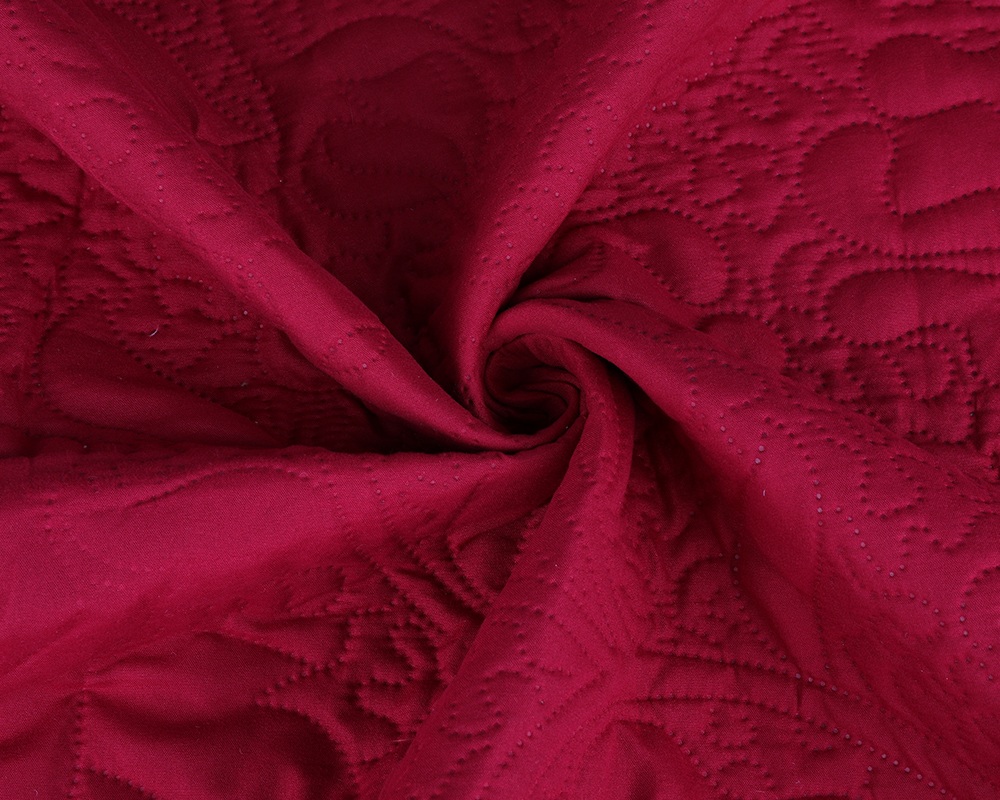Search...
The compatibility of stitching in bedding sets with the type of fabric used is essential for ensuring durability, comfort, and aesthetic appeal. Different fabrics require specific stitching techniques to maintain their structural integrity and prevent issues like tearing, unraveling, or puckering. Here's a breakdown of how stitching suits various fabrics:
Cotton is a breathable, durable fabric commonly used in bedding.A standard lockstitch or double stitching works well with cotton because it can withstand regular washing and wear. Medium stitch density is recommended to avoid making the seams too stiff. Too tight stitching may cause the cotton to wrinkle.Since cotton can shrink after washing, stitching should allow for some flexibility to prevent seam distortion.
Linen is strong, moisture-wicking, and lightweight, ideal for bedding.Linen pairs well with reinforced seams like French seams or double-stitched seams due to its coarse texture. Overlock stitching is also beneficial to prevent fraying.A slightly looser stitch is preferred to avoid pulling or puckering, as linen has a natural tendency to wrinkle.Linen is prone to shrinkage, so stitching should accommodate the fabric's post-wash behavior.
Silk is soft, luxurious, and delicate, often used in high-end bedding.Fine stitching with small needle sizes and silk or polyester thread is necessary to avoid damaging the delicate fibers.Fine and tight stitching works well, but care must be taken to ensure it doesn’t pull the fabric or cause puckering.Stitching must be smooth and flat, as any roughness may irritate the skin. A French seam or narrow overlock is often used to ensure a neat finish.
Polyester is strong, wrinkle-resistant, and often blended with cotton in bedding.Polyester fabrics require sturdy stitching, such as double or overlock stitches, as they are durable and can handle high tension without tearing.Medium to high stitch density is recommended to create durable seams that can handle stretching and movement.Polyester is resistant to shrinking, so stitching doesn’t need to account for fabric distortion after washing.
Flannel is a soft, warm fabric often used in colder climates.Flannel requires strong, reinforced seams due to its thicker texture. Overlock or serged seams work well to prevent fraying.Lower stitch density can work well since flannel is a thicker fabric, and too many stitches can make the seams bulky.Since flannel can pill, the stitching should avoid causing unnecessary abrasion at the seams.
Microfiber is a soft, synthetic fabric that’s lightweight and easy to care for.Double stitching or overlock stitching is ideal for microfiber, as it prevents fraying and strengthens the seams.A medium stitch density works well to avoid making the fabric too stiff while providing durability.Since microfiber is tightly woven, it needs delicate stitching to maintain its softness and flexibility.

Bamboo is a breathable, eco-friendly fabric with a soft, silky texture.Bamboo fabric benefits from reinforced seams such as French seams or double-stitched seams, which prevent fraying.A fine stitch density works best to maintain the smoothness and flexibility of the fabric.Bamboo has a natural stretch, so the stitching must allow for some give to avoid tearing the seams.
Jersey knit is stretchy, soft, and often used in bedding for its comfort.A stretch stitch or zigzag stitch works best with jersey knit to accommodate the fabric’s flexibility.A looser stitch density is recommended to maintain the stretchiness of the fabric without creating tension at the seams. Overlocking the edges is essential to prevent the jersey from curling at the seams.
The type of thread used should match the fabric's characteristics. For example, silk or polyester threads are suitable for delicate fabrics like silk or satin, while cotton thread works better with natural fibers like cotton or linen.
For stretch fabrics (e.g., jersey, bamboo), flexible stitching techniques (such as stretch or zigzag stitching) are crucial to prevent the seams from breaking when the fabric is stretched.
The stitching technique and thread must be carefully chosen to suit the specific fabric type used in the bedding set, ensuring durability, comfort, and a visually pleasing finish. Would you like more details on a specific fabric or stitching method?

 English
English
 中文简体
中文简体
 Español
Español





.jpg?imageView2/2/format/jp2)






